|
Dear Endurance Athletes, Please stop assuming that you can train for an event without appropriately setting your nutrition plan up. That’s an assumption that will lead to lack of progress and sub-par performance! Love, Tiana Okay, maybe that’s a little harsh but sometimes the truth can be! For example, let’s say your goal this year is to PR your Half Marathon time! Would your approach be to just run 13.1 miles at your goal pace every single day of training? (I’m praying you’re screaming NOOOOO on the other side of the screen right now!) That sounds hard (physically AND mentally), destructive on the body (talk about a recipe for holding on to fat tissue!) and down right boring! Instead, if you have a great plan, you are going to periodize your training so that you have phases where you build a base of endurance, then you build some speed, then you practice some race simulations (test nutrition, gear, etc), then you test (RACE DAY!), then you recover. If we take it even deeper, each week of training will call for different types of training too. Some weeks will have more volume than others. Some weeks will call for more speed work and maybe even some overreaching workouts. Some weeks will be recovery weeks so you can soak up all your training! Even your individual workouts are broken down: you start with a warm-up that is slow and easy, then maybe you do some skill work, then some speed work, then you cool down. This, my friends, is periodization. Periodization is the concept of breaking something up into defined blocks or periods. If you have been an athlete for awhile, especially one who has a “season,” you should be familiar with this concept. So if you understand the value and necessity of varying your endurance, intensity, frequency and recovery to get the best out of your body for your sport, why wouldn’t you do the same thing with your nutrition? Guess what? YOU SHOULD. This article is going to be a 10,000 foot view of nutrition periodization and how to apply it to your training and performance goals so you can start seeing better results! TRAINING CYCLES Let’s start with the training cycles. Any athlete who wants to achieve some type of performance goal should have in place an Annual Training Plan (ATP). Many athletes who work with coaches have this plan put together for them by their coaches. If you don’t have a coach, you can purchase a stock plan to follow online. There are plenty of great stock plans available for purchase from coaches through Training Peaks, or you can reach out to me at Fifth Element to put the right plan together for you and your goals. Whether you are building your own annual training plan or purchasing one, there are a few components that must be included:
CREATING YOUR OWN ATP To create your own ATP, start by plugging your races onto your calendar. Then, using whatever training plan you obtained, work backwards from your race date to plug in your specific training blocks. For example, if you plan to follow a 12 week training program into your first half marathon of the year, which is on May 31, then your first training block will start on March 9th (12 weeks before May 31). Everything between your last event last year and March 9th of this year is considered by most as your “off-season” and/or “pre-season.” This annual training plan is what we call a macrocycle, which makes up your entire season. For most ameteur athletes, this is usually one year in length. For an athlete training for something like the Olympic Games, this cycle might be 4 years. Within the macrocycle, we have multiple mesocycles. These mesocycles usually refer to a single block of training which usually lasts for several weeks. For example, a 4 week build block would be a mesocycle. Within each mesocycle, we have microcycles. A microcycle is a very small block of training which usually lasts about 1 week in length. For example, within the 4 week build block (mesocycle), you will likely have 3 gradually increasing weeks of endurance and a 1 week recovery. Each of those weeks would be an individual microcycle within your mesocycle. Make sense? Photo Credit: Sportlyzer Academy A TIP FOR YOUR ATP When you are building out your own annual training plan, it is a great idea to get down on paper your macrocycle (your entire season), and the mesocycles (the individual blocks that will make up your training into each event). It is not necessary at the beginning of the year to build out the fine details of each microcycle as these can and will likely change as the season progresses. If this is not something that comes naturally to you, consider hiring a coach to do it for you. I know you’re likely thinking “I thought we were going to be talking about diet cycles, not training cycles!”. And you’re right. But explaining the breakdown of the training plan itself will help you understand how to approach your nutrition plan! This is because once you know your macro and meso cycles, now we can apply the same concepts to create your annual nutrition plan. NUTRITION CYCLES It is not uncommon for athletes to come to me and say “I want to lose body fat and gain lean muscle.” If you don’t understand how challenging this is to do at the same time, refer back to my last blog that addresses this topic HERE. To put it simply, attacking both goals at once can lead to overwhelm and failure. Instead, focusing on one goal (i.e., lose body fat), then focusing on the other (i.e., gain lean tissue) can be incredibly effective. The demands on your body for each of these goals is different and in order to achieve them, you would need to eat differently. Think about it. An overweight athlete trying to lose excess body fat does NOT eat the same diet as an Olympic weightlifter trying to gain more muscle and strength. I bring this idea up with you because it is a concept that can be applied to endurance athletes interested in getting faster for a future event. As you cycle through the various training blocks in your ATP, your body will have different energy requirements that will need to be met (just as your body requires different things when you have different goals!). This is when having a great Annual Nutrition Plan (ANP) can be helpful! The goal of any great ANP is to strategically combine your exercise with your nutrition to obtain positive adaptations that support your performance. For instance, did you know that eating an increased amount of carbohydrates for a few weeks leading into an event can increase the absorptive capacity of your intestines which in turn reduces your risk of GI upset? I don’t know about you, but I don’t want to waste anytime in a port-a-potty at a race, especially when this is something that can be avoided with proper nutrition! WHY NUTRITION PERIODIZATION IS KEY Periodizing your nutrition can have a direct effect on:
NUTRITION STRATEGIES FOR YOUR PRE-SEASON Pre-season is the best time for you to prioritize body composition changes. For most athletes, this usually means losing body fat or gaining lean tissue. This is also the time of year that GOOD HABITS around your diet and lifestyle need to be established. Spending time learning how to plan weekly menus and meals, cooking and bulk prepping food can all be very helpful. Once you officially start training, you won’t have nearly as much time or energy to devote to this. If you already do those things, pre-season is a great time to break up the monotony of your regular meals and experiment with new recipes. Other habits like proper hydration should also be established. NUTRITION STRATEGIES FOR YOUR BASE PHASE Base Phase of training is when most athletes transition away from whatever fun sport they have been doing in their off season, and start to build back an endurance base in their specific sport. Nutritionally, this is a great time to focus on fat adaptation (i.e., transitioning your body to burn fat over carbohydrates). The body can be taught to oxidize (burn) more carbohydrate or fat, depending on training and diet. The average person has approximately 1,400 - 2,000 calories worth of carbohydrate stored in their body and 50,000 - 80,000 calories stored as fat. Clearly the body has plenty of resources in the form of fat that it can utilize for energy purposes. When the body burns more carbohydrates, it will naturally store more fat (something most people, especially endurance athletes, don’t want). Whereas burning more fat will allow the body to preserve the small amount of carbohydrates it has. Every endurance athlete will benefit from training their body to burn more of their stored body fat instead of relying on exogenous glucose from external sources like gels and goos! The more energy we can obtain from our own body without having to eat it, the better off we will be in training or in a race. Think about it this way: every single time we put calories in our body, we shunt blood away from our working muscles to help digest that food we just put in our system. So if you want to keep your blood in your muscles, it’s always a good idea to train your body to need less exogenous calories from food for training/racing. FROM BURNING CARBS TO BURNING FAT For athletes who have fat adapted in the past, doing a “reset” during your base can get your body burning more fat again in as little at 5 days! For athletes who have never gone through the process of fat adapting, it may take a little longer to effectively burn body fat and this process can and should be started much earlier in the year. If you need tips on how to get this process started, I have a free guide (including a meal plan!) to help you jump start the process! STRATEGIES TO SUPPORT YOUR BUILD PHASE In the build phase of training, we start focusing more on endurance, speed and intensities. This also means that our energy demands typically go up! Nutritionally, these energy demands need to be met in order to obtain the desired training adaptations. In other words, you have to make sure you are eating enough! If you don’t meet the energy demands of your body, your training will suffer. Who wants that?!? Most of the time, this increased energy demand is met with an increase of carbohydrates to support your harder and longer sessions. But “carb loading”, as it’s so well known, doesn’t mean eating pasta on Friday night before your weekend training! Instead, it might mean eating more root vegetables with meals and occasionally throwing in some non-glutinous grains if your body tolerates them well. CARBOHYDRATE TOLERANCE How well our body tolerates carbohydrates is known as our “carbohydrate tolerance” and is determined based on our genetics as well as whether or not your body is responding well to insulin. How do you know if your body tolerates different types of carbohydrates well? You test! Carb testing is a really important piece to discovering if your body likes specific carbohydrates. For example, I learned through testing that my body does fine with non-glutinous grains, like rice, but not well AT ALL with fructose, like bananas. We don’t always FEEL our blood sugar fluctuations so testing is definitely the most accurate way to figure this out. Considering how broad this topic is, I am definitely going to be devoting a whole blog to it so stay tuned! And if you’re not on my email list, sign up here so you don’t miss it! EATING TO TRAIN I highly encourage athletes to use this training block to start ‘eating to train’ (rather than ‘training to eat’). This can be a mind shift for some athletes, but it’s an important one. It is important to start planning out your meals around your training. For example, in this phase, if hard workouts are being completed in the morning hours, intermittent fasting might have to cease in order to recover from workouts, especially if there is another workout in the afternoon. Lastly, this phase is our last chance for testing different foods.
Use this phase to TEST TEST TEST. Once you move into your race specific phase, it’s time to PRACTICE PRACTICE PRACTICE! STRATEGIES TO SUPPORT YOUR RACE SPECIFIC PHASE If you did your homework in your build phase and tested different meals and race specific foods you should now know what you like, and more importantly, what your body likes. Now it’s time to put it all to the test. Typically, in a race specific phase of training, you are adding in race simulation workouts as well as running through a dress rehearsal for race day nutrition (including what you eat the night before!). If you can, it’s ideal to dial in your race day nutrition plan so it goes into autopilot on race day. There will be plenty of decisions to make on race day with regard to performance, so give yourself a break by making nutrition a no brainer! If you need to, set up alerts on your watch to remind you to eat and drink at specific intervals so you don’t miss your nutrition timing. Once you start your taper into your specific event, then your calories can slightly go down as your training load also decreases. At that point, the focus should shift to clean eating, proper hydration and lots and lots of quality sleep! NUTRITION STRATEGIES FOR YOUR OFF SEASON This is the time of year that you should consider taking a break from all the structure, both physically with your training, but also with your diet. I highly encourage athletes to follow an unstructured, high quality diet during the off season. This means you’re still prioritizing a mostly plant based diet with high quality fats and proteins but you loosen the reigns a bit on counting, tracking, and dieting! Yes, this is me giving you permission to indulge a bit more! Ideally, aim for an 80/20 approach where 80% of your meals are clean and nutrient dense whereas the remaining 20% is more relaxed! For most athletes, this phase of training doesn’t last very long, so the amount of damage that can be done with enjoying yourself 20% of the time is negligible. And for most athletes, it certainly helps create motivation to get “back on the wagon” when preseason starts and a more regimented diet is being followed. WRAPPING IT UP So there you have it, my high level overview of a basic nutrition plan for your training and race season. Interested in getting more details about the nutrition recommendations during each phase? You’re in luck. I’m dedicating the next few articles to exactly that, so stay tuned! And make sure you’re subscribed to my email list so you don’t miss anything! Do you have a family member or friend who could benefit from learning more about creating an annual nutrition plan to shadow their training plan? Share this article with them and make sure they’re also signed up to get all the latest email updates from me! REFERENCES:
1 Comment
If you're following along with my Real Food Reset on Facebook, then you know that I just finished my Winter 2020 Three Day Water Fast, along with a whole bunch of people who did it with me (WAY TO GO you guys!!!). I realize that many of you may see “3-day water fast” and want to click X but hang tight and read through this whole post. Not only will I be sharing with you the data I collected from this most recent experience, but I am also going to be giving you my reasons for fasting which may motivate you to try it out yourself. First I want to say that generally speaking, I don't exactly love water fasting. There are things about it that I appreciate, but let's be crystal clear...I freakin' love food. LOVE. IT. I use it to bring together some of my favorite people to celebrate the little and big things in life. It nourishes my body and makes me faster and stronger! And for most of my life, like some of you, I have used food to help me deal with stress, sadness, and a whole host of other emotions (see I’m not perfect either, friends! I don’t recommend this behavior but once in a while it happens, and that’s okay!) So WHHHHHHHY on earth would I fast for 3 days straight consuming nothing but water? Well...the short answer is longevity. My grandmother struggled with Alzheimers disease that eventually took her life, and my aunt is currently living with it too. It scares me to think that someday, due to genetics, I may lose control of my mind and forget the people I love the most. I have done enough reading and research to help empower myself to make choices that can help me avoid the same fate as my family so why wouldn’t I do whatever I can? That is MY why! And knowing how prevalent diseases like Alzheimer’s are, I wouldn’t be surprised if your ears perked up a bit too. Because the reality is, why wouldn’t we want to figure out a way to have a higher quality of life for a longer amount of time? So let me explain how water fasting helps me sleep at night knowing that I'm doing everything I can to be sharp as a tack when I'm in my late 90's (or older)... A QUICK NOTE The point of this post is not to teach you how to properly and safely conduct a longer term water fast. Instead, I will be focusing simply on the benefits of water fasting and what you might expect from the experience. If, after reading, you are interested in learning more than I’d love for you to contact me so we can setup a time to talk more! REASONS TO WATER FAST There are two main reasons to choose to do a water fast: weight loss and longevity (aka - anti-aging). Let's take a look at both. WEIGHT LOSS In my experience with private clients seeking a lower body fat percentage, the common scenario goes something like this: change the diet or movement routine - lose some initial weight - get stuck at that weight. The weight loss journey is hardly ever a straight road. I consider 'being stuck' when someone has been getting results (whatever those are for that person), and then no longer gets results doing the same thing for 7+ days. It obviously doesn't make sense then to continue to do the same thing we've been doing and expect to get more results. Isn't that definition of insanity? So...we change things up. Sometimes we change the diet or movement routine again, or sometimes we use fasting as a tool. It's just ONE of MANY tools we can use to get different results. Fasting is something our body was designed to do. If we weren't equipped to go long periods of time without food, we wouldn't be here. Our great ancestors did not have the luxury of swinging by the 24 hour food mart on the corner in the middle of the night if they were hungry. They had to deal with their hunger until they were able to obtain food from either native trees/shrubs, or harvesting an animal. Sometimes, that was days, or even weeks! The Science Behind Fasting and Weight Loss Source: www.thefastingmethod.com One of the best known, modern day experts in this area is Dr. Jason Fung. I have personally learned a lot from his work. According to him, fasting is part of a natural process. Each day we are either in a “fed state” (i.e., our body is storing the food we ate) or in a “fasted state” (i.e., our body is burning the food we ate). When we eat, our insulin levels rise. This causes some glucose to be burned as quick fuel for our cells and the remaining glucose, as well as fats, to be stored for future use. When we don’t eat, the opposite happens. Insulin levels decrease resulting in our bodies burning the stored energy (i.e., glucose and fat) for fuel. The longer we abstain from eating, the more energy (aka - calories) our body will burn through. If we choose to follow a low carbohydrate diet, on top of utilizing fasting as a weight loss tool, our body will also have less stored glucose to burn and thus head straight to the stored fat for energy use. Essentially, what Dr. Fung is saying, is that the longer we fast, the longer we are burning stored energy (i.e., calories) and so weight loss will follow. It’s relatively obvious! Despite there being plenty of science to backup the fasting-weight loss connection, I think we all intuitively know that weight loss occurs when you don’t eat for multiple days. After about 32 hours, your body runs low on stored body sugars, and will begin to favor burning body fat instead. Since the goal for most people is to lose body fat when they say they want to 'lose weight' then getting past the 32 hour mark for a fast is a great goal. Once you decide to break your fast, you can expect to have a bit of a rebound in weight. There are lots of factors here, but it is not uncommon for some weight to come back on (again, I think this is something we all intuitively understand). Let's say for example you fast for 3 days and lose 6 pounds. With a very strategic re-entry eating plan, it would be common to see a 2 pound rebound in weight, and to successfully keep off 4 pounds. A pretty solid trade off, since typical weight loss goals hover in the 1-2 pounds per week range! More importantly, this fast can give the body the shift it needs to get back onto the weight loss train again (aka- get un-stuck and finally see those numbers start moving in your desired direction!). So ultimately, for your fast to result in the greatest weight loss that actually stays off you need to have a plan in place for your “break-fast” meal as well as the meals that follow it. If you build it correctly, with the appropriate help from a professional, you can expect to see a minor bounce back but an overall loss that can re-energize your body to continue on the weight loss track! I have been using fasting as a strategy for some of my private clients for years and not only does it work, but I repeatedly hear clients say “that was way easier than I thought it would be!” Everybody is different, but I typically use this tool 1x per month with clients who are looking to lose a large amount of weight and have high fasting blood sugar. LONGEVITY/ANTI-AGING Personally, this is why I fast. We can spend days going into the details of how fasting can help prevent protein build up in the brain, prevent cancer, and even increase mitochondria growth but obviously we don’t have days. So instead, what you need to know is the term “autophagy”. Autophagy is a natural process that occurs in our body when we are in a fasted state. Essentially, it is our body’s way of cleaning and recycling unneeded or damaged proteins. These proteins are broken down into their individual parts (i.e., amino acids) which the body then determines whether a) they should be excreted or b) they should be rebuilt into something better! Fascinating right? How does this apply to Alzheimer’s? Simple. Alzheimer’s is a condition in which there is a build up of so-called junk protein in the brain which is caused by a dysfunction of the process of autophagy. So, if there is a process in the body that naturally breaks down excess and defunct proteins, then activating it could prevent the onset of this horrible disease. Now do you understand a little better why I feel so strongly about this? Autophagy has also been shown to destroy pathogens such as bacteria and viruses and might help prevent cancer, metabolic diseases, and other neurodegenerative diseases such as Parkinson’s. I would love to live a long time, but only if I can have both my mind AND my body to enjoy it! If that means a few days without food 2-3x per year, I'll do it. And honestly, it's really not that bad. As an overachieving, type A, perfectionist endurance athlete, it's one of the only times I truly give myself time to take it easy.
Sounds kind of nice, right? This is also why I choose not to fast at home! If I did, I would clean my house, do my laundry, work on my to-do list… and so on. Instead, I avoid it all together so that I can give my body the full break it needs, including digesting! It actually feels really amazing to do this. It's a gift that I know my body deserves and I often don't give it. So since we can't measure autophagy right now outside of the lab, we can only speculate from the data we can measure that it is happening. There is all sorts of talk now that you can get the benefits of autophagy and still eat minimal calories a day. But it is all speculation! Once we have the technology to measure it, I will gladly change my protocol to match what the science says. But until then, I will stick to a 72 hour fast because that is what the science stated is the amount of time needed for autophagy to occur! Now that I know water fasting is actually quite easy and is, in a way, relaxing and freeing, I actually look forward to how great I feel afterward. I still don't love not eating for 3 days, but it's a small price to pay to live a long and happy life. MY RESULTS So let's look at my results so that you can get an understanding of what may occur during a water fast.. I measured what I could with the tools I have, which included:
I started my water fast by first getting myself into ketosis. This isn’t 100% necessary but it makes the transition to a water fast so much smoother you are already burning stored body fat for fuel. I started this process in early January and was using a keto mojo to measure my ketone levels. On Wednesday (2/5/20), I ate my last meal around 6pm at the airport before boarding a flight to Scottsdale, AZ. Why Arizona? My husband had a conference there and it's warm. :) Since he was fasting along with me (you can’t go wrong with a good support system!), we drank water with sea salt and herbal tea until Saturday (2/8/20). We then broke our fast with bone broth and steamed cauliflower around 5pm. We ate our first full meal about 90 minutes later at a really great all paleo restaurant near our hotel. Notice how we were very strategic in our “break-fast”. We did not go “all out” and devour whatever we could. We planned a gentle return to food and focused on the most nutrient dense foods possible. The Data I know we all love numbers so here are some numbers by the day: Wednesday - 2/5/20 Weight: 149.2 Body Fat: 17.3% Skeletal Muscle: 48.2% HRV” 7.2 Travel day and last meal (chicken, spaghetti squash with pesto, and roasted vegetables) at 6pm. Thursday - 2/6/20 Weight: 149.0 Body Fat: 17.3% Skeletal Muscle: 48.2% HRV: 8.9 The first day is always just keeping busy. I worked most of the day on my computer, and when I felt little pangs of hunger, I would get up and move around. Sometimes that meant going for a walk outside, sometimes that meant sitting in the spa at the hotel. Just something to help change the routine. That night, my core temperature dropped, which is pretty common when fasting. That is one thing I advise people to be aware of. I was grateful to be in a warm location with a spa to sit in whenever I felt really cold. I took 360mg of magnesium glycinate before bed that night and slept soundly through the night. Friday - 2/7/20 Weight: 146.4 Body Fat: 16.9% Skeletal Muscle: 48.4% HRV: 7.6 Day two was GREAT! I had really high energy levels and my focus was much sharper than usual. My energy felt high and I decided to go on a very slow jog/walk in the middle of the day. But notice my HRV dropped dramatically on this day. That’s because fasting is a BIG stressor on the body. A good one, but a stress none-the-less. Saturday - 2/8/20 Weight: 144.0 Body Fat: 16.6% Skeletal Muscle: 48.6% HRV: 7.2 Day three has always been the hardest for me. I think part of it is psychological...knowing that I will be eating that evening. But my energy levels were lower on day three, even though my brain still felt incredibly sharp. I spent most of the morning at a coffee shop working on my computer drinking herbal tea. We broke our fast with Vital Proteins powdered organic chicken bone broth and steamed cauliflower before eating our first meal about 90 minutes later. The Rebound As an athlete, I'm mostly concerned about the rebound effect from a water fast. As I mentioned, I don't do this for weight loss, but instead for longevity. I always want to make sure that I am doing good things for my body and a big priority with these fasts is making sure I don't lose lean tissue. However, despite what we commonly hear (that fasting or starvation can lead to muscle loss), it isn’t necessarily true. Some studies have even found that fasting could preserve lean mass when using it as a weight loss tool, in comparison to calorie restriction alone. The reason for this has to do with the hormones that spring into action when insulin drops - in particular growth hormone! During the fast, growth hormone is high! Because no protein is being built, our lean mass doesn’t actually increase. However, growth hormone remains high once we feast again and so we experience a rebuilding phase as the so-called “clean up phase”. The scale, although not nearly as accurate as something like a DEXA scan, showed lean tissue growth during the fast, with a settling back near baseline within 1 week (I started that fast with 113 lbs of lean tissue and 1 week post fast I was at 116 lbs of lean tissue). This makes sense as adrenaline and natural human growth hormone surge during a fast. So if you look at my data post fast, I have basically settled back almost exactly where I started. My weight is hovering between 147-149, my skeletal muscle is at 48.3% and my body fat is back to 17.3% (which is lower than what my DEXA scan shows...meaning my scale is not accurate but that's okay with me since I'm looking for trends, not pointed data here). Since my focus was not on keeping my weight down, I personally went right back to eating and working out the same way I did when I went in. Except I felt well rested and energetic about 1 day after breaking the fast. My HRV, which plummeted pretty low by day 3 (expected as fasting is a stress), rebounded back up to 9.1 within 2 days and has mostly stayed in the high 8's and low 9's since the fast. I'm sure the HRV score has more to do with 3 days of full rest and recovery than anything to do with the water fast. Conclusion All in all, I'm super happy I did the fast the way I did it. I will continue to do multi day water fasts until more science comes out that shows something different is better. I will also continue to use these water fasting days as a full body recuperation as that is what feels best to me! I already have my next one on the calendar. This time, at a hot springs resort. I can't wait! If you are curious about water fasting and how it can help you live longer, lose weight, or benefit your sports performance, reach out to me ! REFERENCES
Well...it's official. Most people have forgotten or completely given up on the goals they set for themselves on January 1st. I have been parking in an overflowed lot at my gym for the past 5 weeks, and this week, I've gotten nearly front row parking spots every time I've gone. Yes, I’ll be honest. I am happy to not have to wait around for a swim lane. But more parking at the gym says a lot and it makes me sad that so many people have lost sight of their goals for 2020 already. It’s not even the end of February! Unfortunately, this is a habit problem, not a lack of desire to 'make your goal a reality' problem. I see this often and decided that now is the perfect time to address this, because truth is it's not too late to recommit to what you want. READ THAT AGAIN: IT IS NEVER TOO LATE TO START AGAIN! I received an email earlier this year from a client asking me how I stay motivated day after day. There are a thousand ways I can answer this! But they all have to do with little habits that I have adopted over the years (did you hear that...YEARS). None of what I do now happened in 30 days. The healthy life I have in place now is a result of little baby steps that became part of my normal routine coupled with the missteps that helped me learn what to do and when! No one reaches their long term goals without messing up here and there. Along the way I’ve tried many things. Some worked and have stuck around while the so-called “failures” were learning experiences that ultimately led to growth. Which means, for every failed attempt, I'm actually got one step closer to finding what works best for me. And let's be very clear... I'm not finished. There is still SOOOOO much work to be done! This is a journey that will last a lifetime and that’s part of what keeps it exciting. My New Normal To prove to you that I haven’t always had it all-together, here are a few examples of habits that I definitely did not have 5 years ago that I have now:
Again, I didn’t just wake up one day and implement all these. There was no extreme overhaul but instead a long term commitment to making the changes I wanted in my life. The Magic Sauce Above are just a few examples of habits that have become part of my everyday life. And it’s possible you’re thinking “I don’t even know where to begin!”. I get that. Which is why, when I look at my success with habit change, along with the clients I’ve had the pleasure of working with over the years, it all comes down to one variable: the belief in who we are or the belief that we are already the person we want to become. A little back story to explain... Growing up, I was a competitive athlete and my body composition has always been maintained from exercise. My diet was 80/20 but just slightly different than my current 80/20 approach: 80% fast food and candy, and 20% home cooked meals that were mostly carbohydrate (so by “slightly different” I mean drastically different…). At the time, we didn't know any better! Since I was fit, I could eat anything I wanted (or so we thought!). Unfortunately, what we didn't realize was that the habit of driving through a fast food joint and eating in the car from packages was a habit that became deeply rooted into who I was. I was the girl who was too busy to prep and eat good food at a dinner table in a relaxed environment. I was the girl who was "healthy" even though I was eating crap. I was the girl who didn't know how to cook, even if I wanted to because I never did it growing up. Fast forward to the day when I became an adult and all of a sudden had 1,000 responsibilities and 'had no time' to cook, workout or even sleep enough (I say 'had no time' in quotes because I see now that wasn't true. I didn't MAKE time for it.). What I believed to be true about my younger self (basically, 'I got this...I'll be fine'), was slowly becoming an 'OMG- this isn't working anymore.' I was gaining weight. I was sleeping terribly. I was fatigued all the time. And I basically felt like crap. So what did I do? I leaned on the one thing that I knew would help: exercise. To keep myself accountable to it, I signed up for something that SCARED THE $HIT OUT OF ME...my first triathlon! I was so scared about it, that there was no way I was going to miss training for it or else I knew I wouldn't be prepared to finish it. Unfortunately, despite my best intentions, this didn't work. I found myself getting more tired. My sleep felt like it was getting worse. And I wasn't enjoying the movement routine as much as I used to. Nutrition Education to the Rescue! Long story short, I realized (with the help of a local nutritionist) that my diet and lifestyle needed a major overhaul. At first, the accountability of meeting with her monthly kept me on track. But it became very obvious to me that meeting with her FOREVER was not an option. So I had to figure out a way to stay motivated without her. For me, this involved 2 things:
But the reality was...I WASN'T that girl because I wasn’t willing to do what I had to do to become that girl. I just WISHED! And it wasn’t until I made the mental shift away from what I wished I was, and FULLY, 100%, no-holds-back, believed with all of my heart that I AM the girl who IS all of those things did they actually happen...permanently! The Rest is History! It's really easy to shop healthy. To cook healthy. To eat healthy at home AND when I'm out with friends. Because THAT IS WHO I AM. That is the person I chose to become and once I made a commitment to that choice, there was no looking back! Who we are and how we are is a choice! No matter what habits or mindsets you currently reside in, they are a choice. I know people with less time than you, less money than you, less overall resources that you that decided they wanted more and went after it. So when it comes to staying dedicated to making changes, it’s all about how you see yourself right now. And until you start believing that you too are the healthy, vibrant, full of energy person you desire to be, you'll have a hell of a time getting there. My Tips for You Don’t worry. I wasn’t planning on telling you a story without giving you some action steps you can take to recommit to your goals! Here are some of my favorite tips to help you fully embrace that person you want to be, because let’s face it, REALLY, TRULY believing you ARE that person doesn’t just happen overnight or by going through the motions but hating it every step of the way. CREATE AN ALTER EGO This might sound crazy to you, but it ACTUALLY WORKS. I was first introduced to this concept from the book 'The Brave Athlete- Calm the F*ck Down and Rise to the Occasion' by Simon Marshall and Lesley Paterson. This is a book written specifically for triathletes, but can certainly be applied to all endurance athletes, and I HIGHLY recommend it! The basic concept for creating an alter ego is this: fake it until you make it. If you can't be the person who loves to cook. Who loves to eat healthy. Who loves to exercise. FAKE IT! As Simon says in the book, "It turns out that following advice to 'just be yourself' is often the worst thing you can do." He goes on to say that pretending to be an alternative identity can favorably alter your biochemistry and improve your performance, or in this case, your life! Even Queen Be did this! The queen of confidence was once not confident in her abilities so she used to perform as "Sasha Fierce" until she felt like she could embody the performer she wanted to be. So...you do the same, but for the areas of your life that you want to have healthier habits around. I know this is exciting but don’t OVER do it! Typically when we get some motivation our tendency is to go from 0 to 100. Please do not do this! This is another reason so many resolutions fail! Instead, I'd advise that you start with ONE area, for example, the kitchen, that you want to change for the better. Want to love cooking? Think of all the attributes of a person who LOVES to cook. You can make these up, or you can think about someone you know who already loves to cook. First person that comes to my mind? Emeril Lagasse...BAM! Talk about someone who LOVVVVES to be in the kitchen! Go ahead and dive into who that person is and then apply these attributes to your alter ego.
Once you have this list and a very clear picture in your mind of your alter ego, it’s time to step into their shoes! There’s no sense in fantasizing if you’re not going to take action. Start pretending to be them when you’re in the kitchen. Wear the same clothes. Say the same things. Act the same way. BE THEM. Every single time. This strategy might seem silly at first and it may have to be used for years, but eventually, your own identity in the kitchen will start to develop into someone who actually DOES love to cook. Who actually DOES loves to eat healthy. Someone who actually IS just like Emeril (or whoever your alter ego mimics). Trust me…this works. WWJD? Remember those old rubber friendship bracelets that people us to wear in the late 80’s with the acronym WWJD (“What Would Jesus Do”)? These were intended to be worn as a reminder to make moral decisions. Well, you can do the same thing around specific areas of your life. Pick someone that you admire, look up to, or are inspired by. Then ask yourself, “what would [insert name] do?" For me, I think about people like Christine Crup (from Castaway Kitchen) for meal prep, Emily Schromm for a balanced movement routine, and Daniela Ryf (a professional triathlete from Switzerland) for workout motivation and gratitude. When I’m getting ready to plan my weekly menu, I think “what would Christine prep?” Sometimes she’s busy and she needs to stick with healthy staples to get her through, and sometimes she is ready to experiment with new recipes for some upcoming cookbook she’s developing. When I’m planning out my workouts for the week, I think “what would Em do?” Usually, she is up early and getting her workout done because she has a REALLY busy day. So I often get my @ss to the gym early so I can’t talk myself out of it. And when I’m exhausted and feel like my body might need some rest, I think “what would Em do if she felt like this?” Ya, she would rest! So I do the same. When I’m losing motivation and questioning myself as a triathlete, I think “what would Daniela do?” She would reach out to her coach and support crew for motivation and support. She would give tons of love and encouragement to other athletes, knowing that what you give comes back to you. She is one of the most humble athletes I know and not only do I try to think like she thinks, but there are parts of her in my athlete alter ego too. And in case you’re worried, it is totally okay to tap into other people’s way of life as motivation and inspiration. Your idols have their own idols that they look up to. Don’t be too stubborn to realize that there are people slightly ahead of you and instead take advantage of their teachings to help you reach your goals faster! KNOW YOUR TENDENCY Do you know the book “The Four Tendencies” by Gretchen Ruben? If not, you should. According to Gretchen, people fall mostly into one of four different behavioral tendencies. These tendencies explain how we respond to different expectations in our lives, like eating healthier or meeting a deadline. Understanding your tendency allows you to set and tackle goals based on who you are. Here is a quick summary of the four tendencies: Obligers Who they are:
Tips on Creating Better Habits: The best thing an obliger can do to ensure they reach their goals is have someone to hold them accountable. For example, if your goal is to exercise more, hire a trainer or find a workout buddy! An obliger does best when they know there is a deadline and someone else is expecting something of them. It is also important to build in so-called treats for an obliger to re-energize and avoid burnout (PS - treats do not mean food! You can read more here to get a better understanding). UPHOLDERS Who they are:
Tips on Creating Better Habits - Upholders: It’s important for upholders to utilize to-do lists and calendars! According to Gretchen, “whatever appears on the calendar, gets done”. However, the best thing an upholder can do to ensure they reach their goals is really understanding WHY they are doing so. Since their expectations of themselves are just as important as the expectations of others, there needs to be an inner connection to their actions. For example, if you want to eat healthier, you have to educate yourself fully on why eating healthier is important. In other words, you need to be crystal clear on your ‘why.’ You have to fully ‘buy-in’ to whatever ‘diet’ you are going to follow, or else you won’t follow it. It is wise for upholders with a goal like this also have a “back up plan” like a healthy meal prep service for example. Upholders have a hard time delegating and can become overwhelmed easily with all the things they have to do. Forcing yourself to delegate tasks out from time to time can help you stay successful with your goals of being healthier. If you haven’t caught on yet...I am an upholder! And this is exactly why going to school for nutrition helped me fully buy into the lifestyle I have now, and why so many of my little successful habits have to do with scheduling them on a calendar! QUESTIONERS Who they are:
Tips on Creating Better Habits - Questioners Because questioners have to know what they are doing and why, CLARITY around goals is top priority! Go ahead, ask your questions and seek out all of the answers. Do your research, because if you don’t you will never be fully convinced! Questioners may do well wearing tracking devices (i.e., FitBit) or even keep food journals as a means of self-monitoring. But questioners do need to be careful! As it can be easy getting stuck in a rabbit hole of information, questioners risk getting stuck in the learning phase and never taking action. If this is you, it’s imperative you set deadlines for your research and education period so that you can go out and actually do the thing and make the changes! REBELS Who they are:
Tips on Creating Better Habits - Rebels The best thing a rebel can do to ensure they reach their goals is employ the Strategy of Identity. According to Gretchen, “because Rebels place great value on being true to themselves, they can embrace a habit if they view it as a way to express their identity.” Freedom, self-expression, and authenticity are important to rebels. They tend to dislike schedules, repetitive tasks, and supervision. So, if you are a rebel and you want to stick to your grocery shopping list, you need to remind yourself that YOU made your list. And these are things that YOU want. YOU are choosing to follow your list and be healthier. If you want to stick to a workout routine, mix it up! Find a few different workout types that you enjoy and allow yourself to do them when you most want to do them. So you don’t skip a workout, have everything you need packed in the trunk of your car, so if you get the urge to workout, you have everything you need in that moment to make it happen. If you’re curious about what your tendency is, you can take the free quick HERE. Now go on and be your best self! Ok, so there you have it. My three tips that you can start using now to recommit to (or restart) the goal(s) you set for yourself in January! My hope is that you can use one (or more) of the strategies I listed here to help you try something different so you stick to your goal longer (hopefully permanently) this time around. Remember, don’t overwhelm yourself by doing all of them all at once! Bookmark this page and come back to it every few weeks and see how you implement one more piece of this to your 2020 goals and habit building. Do you have a tool you have used to help you develop a long term healthy habit that I haven’t mentioned here? Tell me about it by leaving me a message in the comments below! REFERENCES:
Protein Supplements: Everything You Want to Know (and the biggest mistake I see athletes make!)2/5/2020 After posting last week’s Wellness Wednesday Blog, which was focused on meal replacement smoothies, I got a lot of questions about protein powders! First off, questions are GREAT! I love to hear them, so keep them coming. They help me tailor my information to YOU. But I realized that a quick post on social media wouldn’t suffice for a topic as large as protein powders, so I decided to dedicate an entire blog post to it. First, let me be CRYSTAL CLEAR that in most circumstances, I am a REAL FOOD FIRST person. Typically, the less processing we do to any natural food, the more nutrient dense that food will remain. That means, not only will we get our dose of protein, but we will also benefit from the other nutrients in that food such as vitamins and minerals. Both which are important in the utilization of the macronutrients, including protein! Just check out the chart below from Stephan van Vliet, who conducted a review of research with colleagues on the efficacy of whole foods supporting muscle remodeling and recovery: THE REALITY Now that I’ve talked a bit about the importance of real food taking the front seat, let’s get real! Sometimes eating a real food meal, especially post workout, isn't always an option for a variety of reasons. That means, our second best option is a meal replacement smoothie you make from scratch with as many real food ingredients as possible. It's pretty easy to get a natural liquid base (homemade nut milk, coffee, tea, or even plain water), natural fiber (from things like chia seeds, ground flax meal, and vegetables), natural carbohydrates (from things like cooked sweet potato, cauliflower and leafy greens), and even natural fats (from things like raw nuts, seeds and avocado). But protein. Who wants to blend a steak into a smoothie. Ummmm...not me. Enter, the protein powders! Since we're trying to stay as close to REAL FOOD as we possibly can, I'm going to avoid even talking about protein powders that are full of chemicals and additives. You know, the ones made with junky ingredients such as gluten, soy, dextrins (such as maltodextrin), artificial sweeteners (such as saccharin), thickeners and gums (such as cellulose and xanthan gums) and emulsifiers (such as polysorbate 80). These ingredients are usually added to protein powders to improve the flavor and to make the powder mix easier, but they often come with a price of gastrointestinal distress, inflammation, headaches, bloating, and even disrupt our hormone balance. Those are the things I highly recommend you steer clear of. There are so many great natural options out there like whey, casein, hydrolyzed beef, hemp, pea, and rice. I really don't see the point in using a bunch of synthetic ingredients. So, let's look at the different protein powder options (pros and cons) and you can decide which is best for you and your needs.... A PRIMER ON PROTEIN Before we get into the powders...we have to talk about protein itself! Protein is a macronutrient (along with carbohydrates and fats) that we consume in our diet. As a food, proteins are comprised of long chains of amino acids. These individual amino acids are what are taken up by cells throughout our body to do their jobs at that particular location. Whole proteins can not be taken up by cells, they MUST BE broken down! That means, a HUUUUUUUUUGE part of making sure our body has all the protein it requires is having optimal digestive function! We can be consuming all of the protein we need but if our GI tract isn’t digesting it properly, we won’t be able to utilize them (I’ll save the topic of digestion for a whole other post!) There are 20 different amino acids that make up all the different types of proteins in our diet. Out of these 20, 9 are considered essential. That means we have to get them from our diet, in the right quantities, in order to be healthy. The other 11 amino acids can be manufactured by our body. The only food sources that naturally contain all 9 essential amino acids come from animals, such as meat, dairy and eggs. Plant foods contain some of the essential amino acids, but not all of them. If animal based foods are being avoided in the diet, eating a wide variety of plant sources is recommended to ensure you get all 9 essential amino acids in the diet from different plant sources. POST WORKOUT RECOVERY IS JUST AS IMPORTANT AS THE WORKOUT ITSELF The fact is that we all workout in order to create a healthy stress on our body, but the GAINS from that workout comes from that workout's recovery! Yes, you read that right. We break down muscle during our workout, and build it up in our kitchens and our beds! AFTER the workout has finished, our body does the biggest job of all...it adapts to stresses from that workout. It's trying to respond to the stress you just created by making metabolic changes so next time that same stress is created, you are more equipped to handle it (in other words, you are stronger next time). For example, in the time after a workout, protein synthesis increases, muscle fibers are rebuilt, fluid is restored to help deliver nutrients to organs and muscles, and metabolic waste products (such as the acids built up during a workout) are eliminated. So many endurance athletes spend so much time focusing on nutrition during their workout, and completely fail to address the most important fueling (AND HYDRATING) window of all...post workout. Now of course there is more to optimizing recovery than just food (like sleep, hydration, and stress reduction), but for this conversation, we are going to focus solely on protein intake post workout. WHAT DO AMINO ACIDS HAVE TO DO WITH IT? Extensive research has been done on optimizing post workout recovery and much of the evidence keeps coming back to protein. Besides supporting the rebuilding of muscle, protein intake shortly after a workout can actually help with the development of new muscle. Much of the benefits we experience from protein is due to amino acids. Besides being considered the “building blocks of protein”, our body needs the full spectrum of amino acids (all 20) to build cells, support muscle growth, and promote energy production. As I already mentioned, our body can make 11 of the amino acids. That means we want our post workout focus to be on consuming all 9 essential amino acids (EAA) that our body CANNOT produce. Of those 9 EAA's, 35% of what makes up our muscles are the three “Branched Chain Amino Acids” (BCAA). These include:
These BCAA's help preserve muscle glycogen stores and reduce the amount of protein breakdown. When it comes to muscle growth and recovery, leucine has been shown to be the most important BCAA of all while Isoleucine has been shown to play a role in blood sugar regulation. All of these amino acids (essential and non-essential) are present in different amounts in different types of protein sources. But since getting an adequate amount of them in post workout is key to optimizing recovery, just eating protein isn't always going to cut it. Making sure you are consuming a protein source that has a complete complex of essential amino acids, and especially high in leucine, can optimize recovery. Foods that are naturally rich in leucine include:
But if you aren't able to do this due to time constrictions or preferring a plant based diet, protein powders can come in handy! MY PROTEIN POWDER TIPS! To get the most out of your protein powder, you need to know WHAT benefit you are trying to get out of it. It is always best to pick a protein powder that you love, that loves your body back, and meets your health and fitness goals. Sure, whey protein has been hailed by many as the best protein powder out there, but if your body doesn't like whey, it is NOT the best one FOR YOU. Here is my list of favorite protein powders, for different goals, as well as their pro’s and con’s: GOAL = WEIGHT LOSS CASEIN PROTEIN Casein is a slow digesting dairy protein that is often considered by many as a "time release" protein. Casein makes up approximately 80% of milk protein (the other 20% being whey). PROS:
CONS:
MY FAVORITE BRAND: Naked Nutrition Micellar Casein Protein Powder which is made from rBGH free dairy cows from the US. It is gluten free, soy free and made with non-GMO ingredients. It has no Artificial Sweeteners, Flavors, or Colors. GOAL = MUSCLE GROWTH Option #1 - WHEY PROTEIN Whey protein is the other 20% of protein derived from dairy sources. Research has consistently shown that whey protein powder is the best for promoting muscle growth and recovery. PROS:
CONS: Excessive consumption of whey protein can potentially cause digestive distress. Similarly, many people have a dairy sensitivity, and some don't even know they have it. If your body doesn't love dairy, using whey protein powder can create an underlying level of inflammation that will negate the benefits of working out! MY FAVORITE BRAND: Vital Proteins Organic Whey which is a cold pressed organic whey protein, with no added ingredients or fillers. It has 5g of BCAAs and a complete complex of amino acids in each serving. Option #2 - HYDROLYZED BEEF PROTEIN A protein derived from an infusion process of beef that preserves critical nutrients, amino acids, peptides, nucleotide fractions, vitamins and minerals. It’s a complete protein derived from a 100% natural, Non-GMO, raw beef with absolutely no hormones or other additives. PROS:
It contains less leucine than whey protein does (and remember, leucine is the BCAA known to support muscle building and recovery) It often doesn't blend well without a blender and it can become gelatinous fairly easily when it has sat for a few hours. So, if you blend your smoothie in the morning before your workout, let it sit, then go to drink it later, you may need a spoon. MY FAVORITE BRANDS: Equip Prime Protein which is gluten, dairy and soy free; made from hormone-free and antibiotic-free beef; has no artificial flavors or preservatives; and is made from just 3 ingredients: grass-fed beef, natural cocoa powder and stevia. GOAL = MEET THE DAILY REQUIREMENTS FOR PROTEIN... without eating a bunch of meat! MIXED PLANT PROTEIN POWDERS Since we're aiming for complete amino acid profiles, and no plant source has this by itself, it is best to look for a protein powder that has blended 2 or more of the following plant proteins. This ensures that you obtain the adequate amino acids needed by your body post workout:
PROS: These blended protein powders are free from animal products for those that are looking for a vegetarian or vegan option. CONS: These blended protein powders are often blended with many other fillers too, so read the labels carefully! MY FAVORITE BRAND: Thorne MediPro Vegan protein supplement which has a complete multi-vitamin/mineral, digestive enzymes and probiotics. MediPro Vegan is more like a multi-vitamin/mineral daily protein supplement, which makes it great for a meal replacement shake. It also contains a complete amino acid profile, so it is great for a post workout shake. COLLAGEN... A BIG NO NO! I can't leave this post without addressing the BIGGEST MISTAKE I see athletes make when using a protein based shake post workout. And that is...using collagen as their only protein source post workout. The reason for this is that collagen protein, although being the most abundant protein in our body, is made up of a different mix of amino acids and does not include all essential amino acids. Collagen is high in three amino acids - glycine, proline and hydroxyproline - which are important to building collagen in your body, a protein that provides strength and structure. Whereas post workout protein focuses on building and repairing muscle, collagen intake leads to improved connective tissue function. This actually lends itself to supporting muscle and can help in the post workout recovery process. However, you still need a complete source of protein to support protein synthesis and exercise performance otherwise you’ll have strong connective tissue without any muscle to support. You can certainly continue to use collagen post workout, but timing of collagen intake is less important than timing of a complete protein source. So if your goal is to improve athletic performance, gain muscle, or lose fat, then utilizing one of the protein sources I listed above should be priority whereas collagen can be used as an additional support supplement. IN SUMMARY If I am being honest, I can write tons more on the topic of protein and protein supplements. But at least now you have a fantastic starting point to understand why a complete protein post workout is essential to reaching goals and what sources of protein are best for you to choose from. Personally, my body doesn't love dairy. My protein powder of choice right now is the Equip Prime Protein and I will add in a scoop of Clean Carb Vanilla if I need some added carbohydrate and I can’t add in a real food option, like a green tipped banana or pre-cooked sweet potato. I use a little battery operated handheld blender (like THIS ONE) to mix it up , but honestly, it is still a little chunky. There are so many great, natural protein powders out there. Do you have a favorite that I didn't mention? Leave me note in the comments about which one you use. I'd love to give it a try! RESOURCES:
|
AuthorTiana Rockwell is a certified nutritional therapist, avid endurance athlete and dark chocolate lover. She believes that by eating REAL food, we can balance our body and reach optimal health and wellness! Archives
May 2022
Categories
All
|




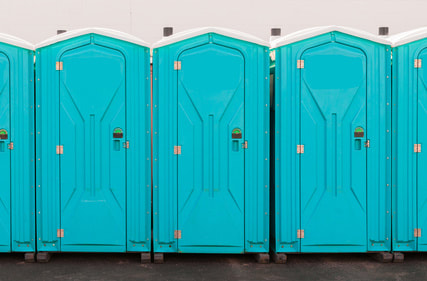

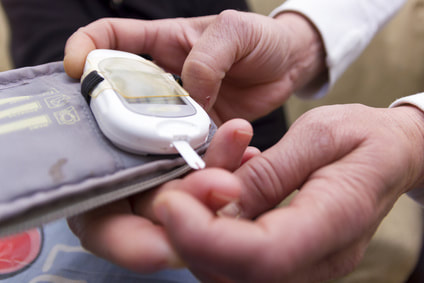



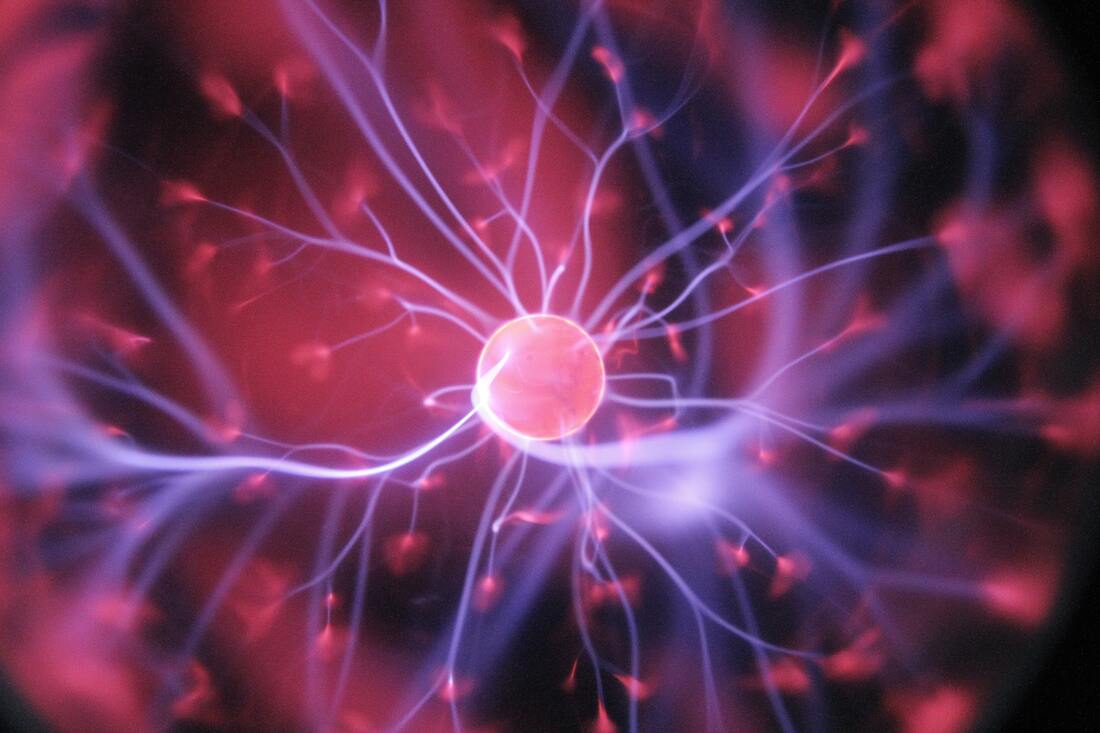




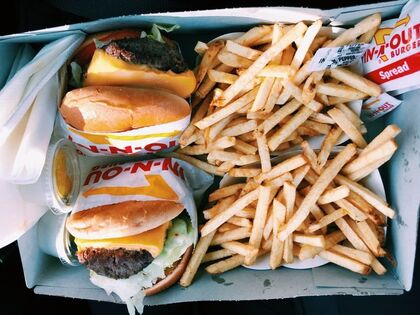


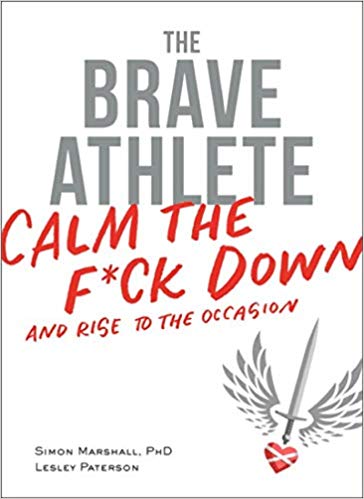


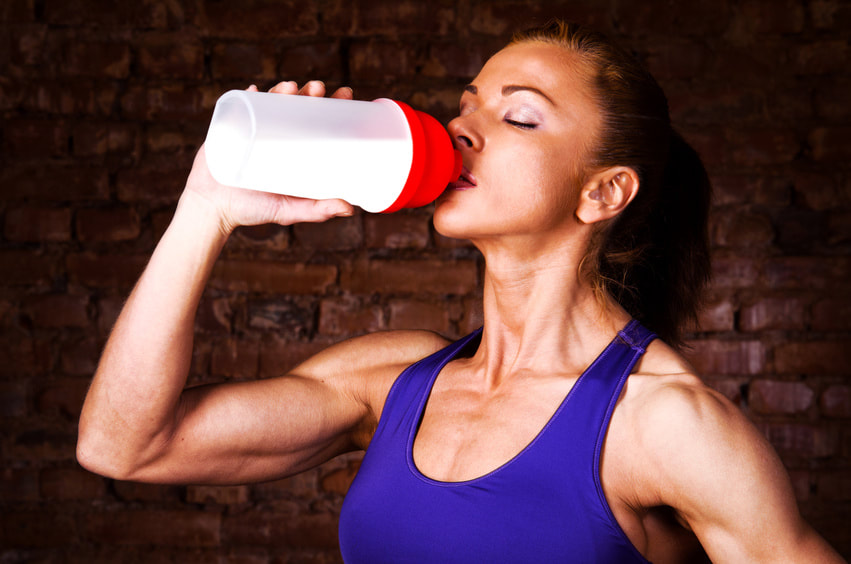




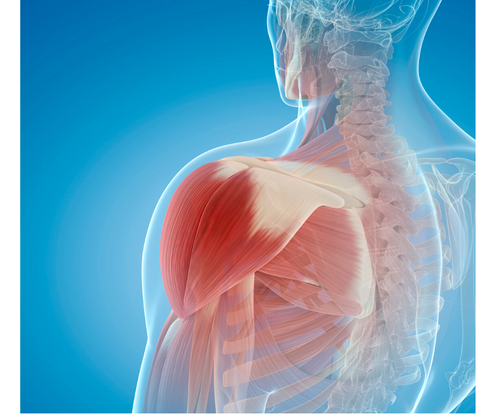


 RSS Feed
RSS Feed